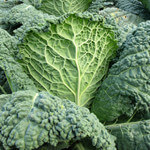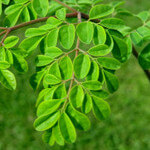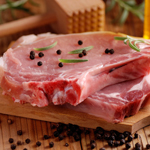 Few nutrients are held to such high regard in the West as vitamin C. This essential antioxidant, which is commonly called the “anti-aging” vitamin, performs a large number of important roles in our bodies, from scavenging free radicals, aiding collagen production, healing wounds, and more. Despite its biological importance, however, our bodies cannot store it like most other vitamins. This means that we must consume vitamin C-rich foods on a daily basis in order to remain healthy.
Few nutrients are held to such high regard in the West as vitamin C. This essential antioxidant, which is commonly called the “anti-aging” vitamin, performs a large number of important roles in our bodies, from scavenging free radicals, aiding collagen production, healing wounds, and more. Despite its biological importance, however, our bodies cannot store it like most other vitamins. This means that we must consume vitamin C-rich foods on a daily basis in order to remain healthy.
While citrus fruits and leafy green vegetables are the best-known sources of vitamin C, they do not contain the highest concentrations of it. This article contains a list of the world’s greatest sources of vitamin C – foods that provide disease-fighting doses of the vitamin, rather than maintenance doses.
Foods High in Vitamin C
Kakadu plums – The Australian kakadu plum, also called the billygoat plum and gubinge, contains the world’s highest concentration of vitamin C. In fact, a report by the Australian government’s Rural Industries Research and Development Corporation discovered that kakadu plums contain between 1,000 and 5,300 milligrams of vitamin C per 100 grams – more than 100 times the vitamin C concentration of oranges and blueberries! The report also found that they are rich in ellagic and gallic acid, two rare phytochemicals with anti-inflammatory properties.
Camu camu – If kakadu plums are the world’s greatest source of vitamin C, then camu camu is surely the second greatest source. According to a spectral analysis provided by the Archivos Latinoamericanos de Nutrición in December 2000, these purple, cherry-sized berries, which are the fruits of the South American Myrciaria dubia tree, contain approximately 3,000 milligrams of vitamin C per 100 grams of pulp. This remarkable concentration makes the fruit unpleasant to eat raw due to its acidity and sourness, so it is commonly sweetened into jams, jellies, and juices.
Acerola cherries – Acerola cherries, also called west Indian cherries, are the red, cherry-like fruits of the Malpighia emarginata tree, which is native to Southern and Central America. 1 cup of these fruits (98 grams) provides us with approximately 1,644 milligrams of vitamin C, which is more than 60 times more vitamin C per weight than an orange. Acerola cherries are also rich in cancer-fighting carotenoids and flavonoids, and have been used in traditional medicine to treat inflammations of the nasal airways.
Indian gooseberries – Indian gooseberries, also called amla in their native India, are Asia’s finest source of vitamin C. One hundred grams of these light green, sour-tasting fruits contain between 800 and 1,800 milligrams of the antioxidant. This is one of the reasons why amla was (and still is) held in high regard by Ayurvedic practitioners: being so rich in free radical-scavenging vitamin C, the fruit can help prevent and treat any degenerative disease, including serious diseases like cancer.
Guava – There must be something in the American continent’s soil that is conducive to producing vitamin C-rich superfruits, because we have yet another one: guava, a small, pink-red fruit that grows between northern South America and Mexico. One hundred grams of guava contain 228.3 milligrams of vitamin C, or 275 percent of our recommended daily intake. While this concentration pales in comparison to the fruits listed above, this is far more than the best-known citrus fruits. Guavas should be eaten whole (including the skin) for optimum vitamin absorption.






